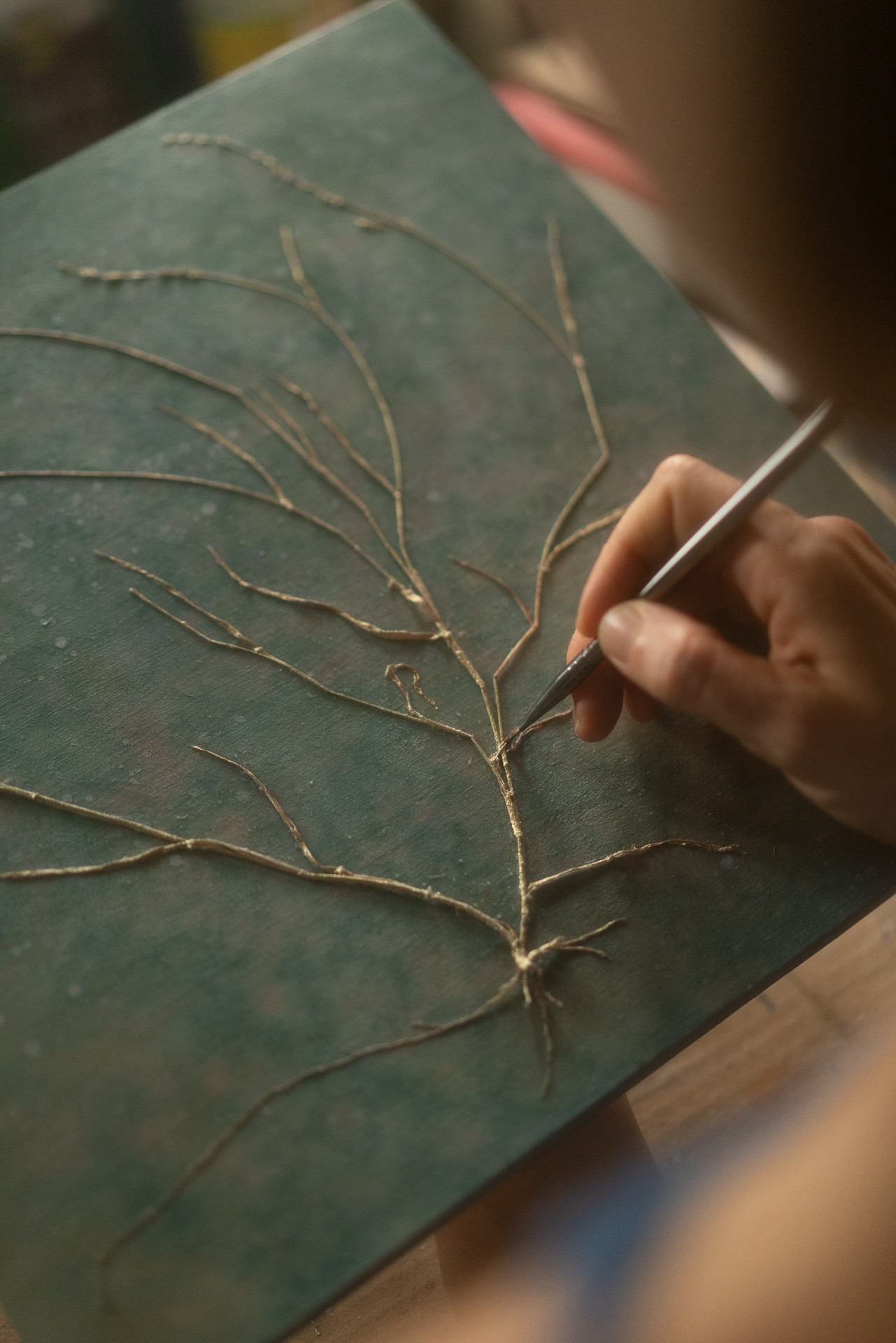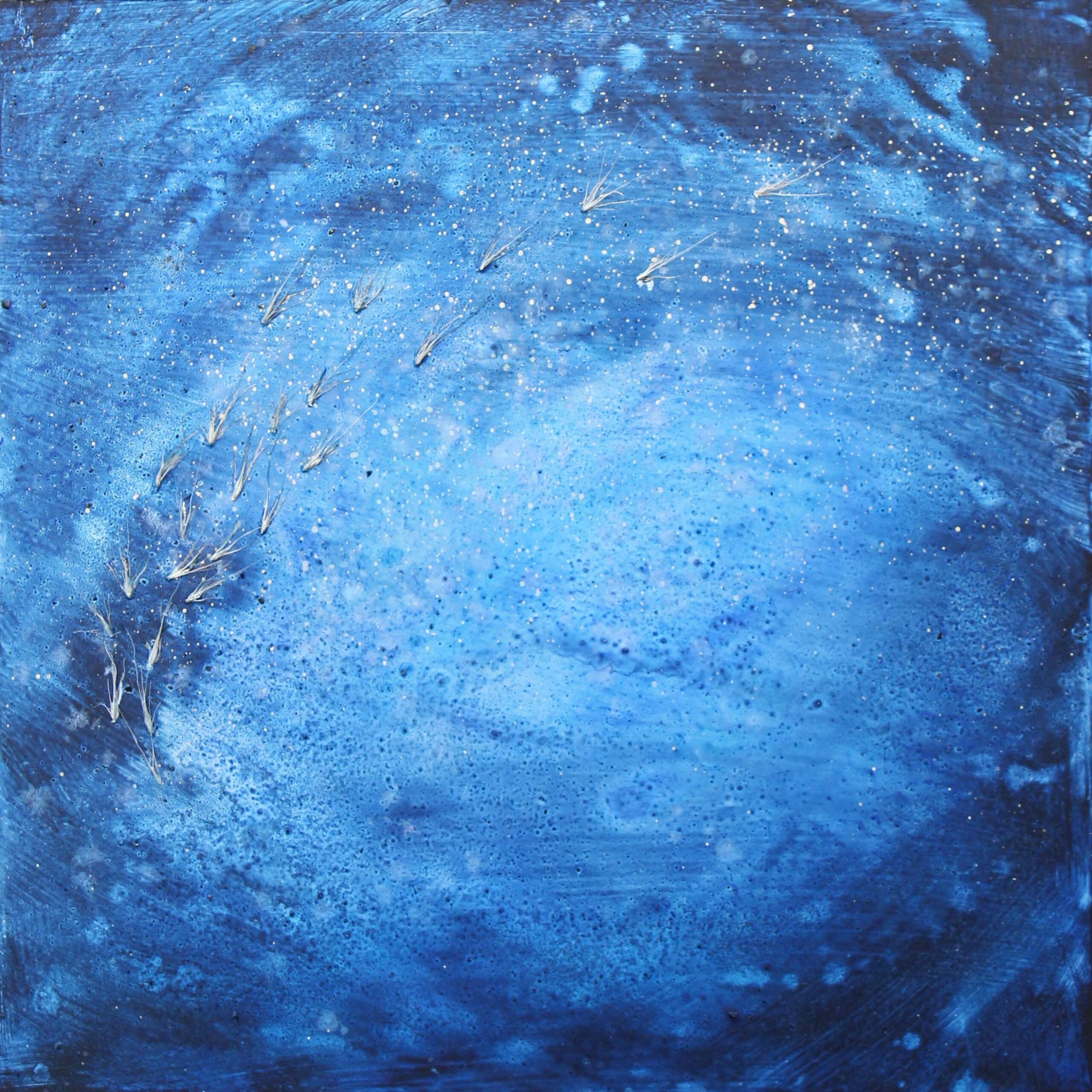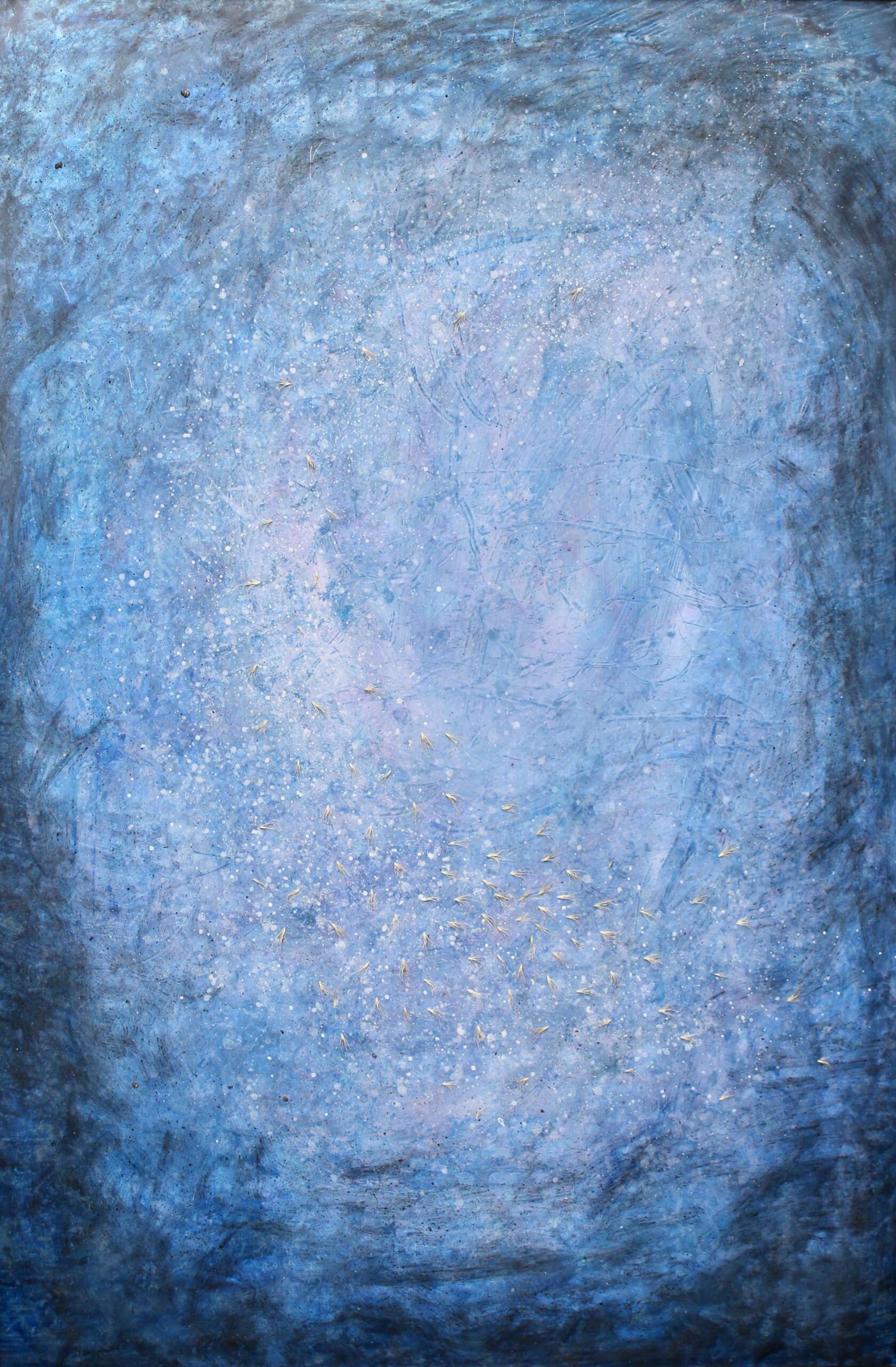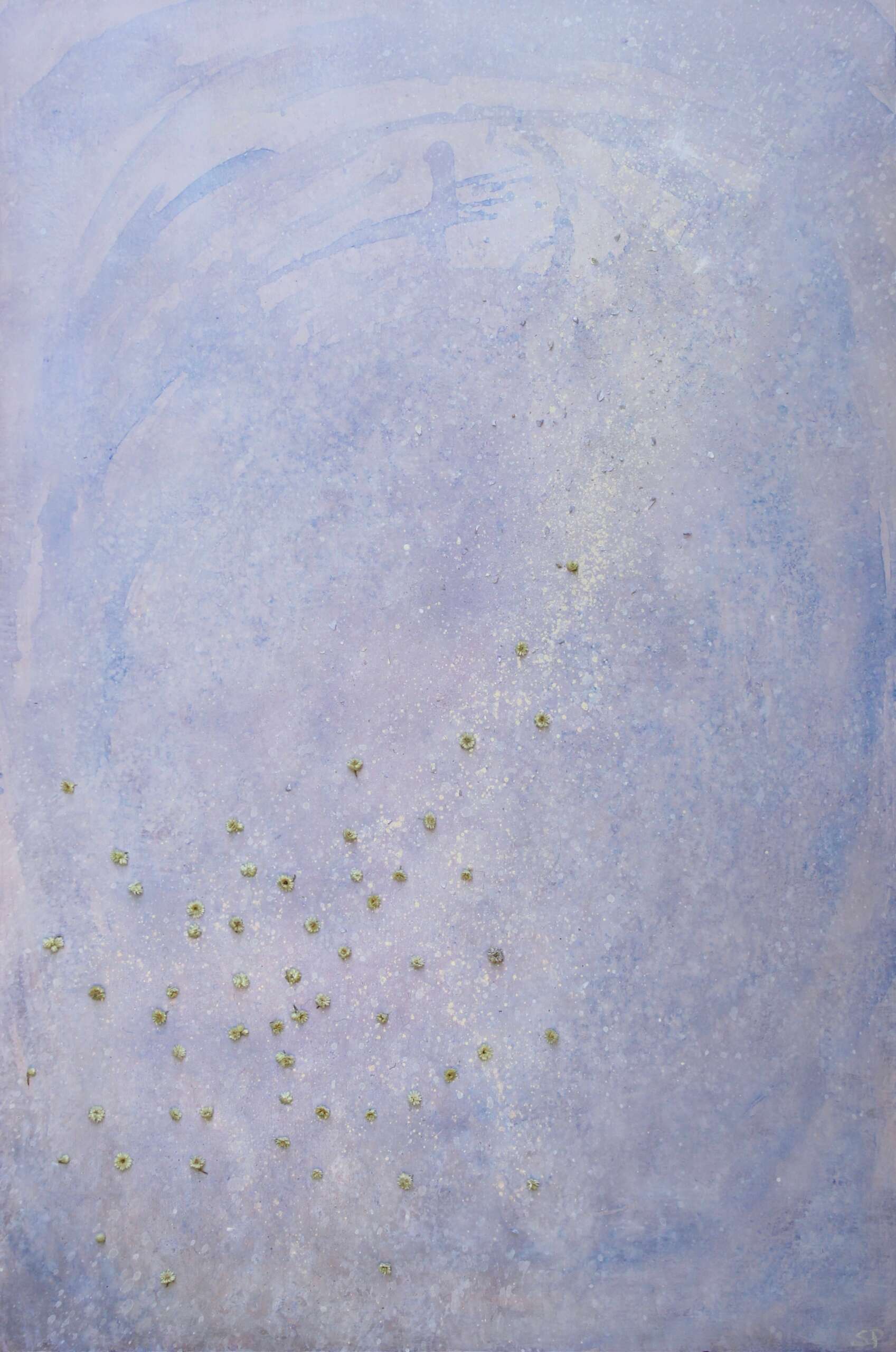We caught up with the brilliant and insightful Sarah Pigion a few weeks ago and have shared our conversation below.
Sarah , thanks for joining us, excited to have you contributing your stories and insights. Are you happier as a creative? Do you sometimes think about what it would be like to just have a regular job? Can you talk to us about how you think through these emotions?
This is an interesting question, because in order to respond fully, we need to define what happiness means in this context. Turns out, there has been much debate over this definition, from the very brief Merriam-Webster version, “a state of well-being and contentment: joy”, to the more complex components studied in psychology that culminate in a profound sense of a life well lived. States of pure joy and pleasure are temporary, while the pursuit of happiness over one’s lifetime is multifaceted and includes experiences of failure, loss, sadness, and disappointment. It also stretches across different domains of our lives from our inner sense of self, the connection to the activities we engage in, and the meaning we derive from our connection to others in our communities. As a creative, my work as an artist has provided me a vehicle to interface with each of these components in a way that feels gratifying, as it challenges me to stay mindful, to grow and adapt to challenges, and to offer something unique to the world.
What’s interesting, and I’m curious if others have had a similar experience, is that I didn’t set out as an artist in order to be happy. I set out to be honest, and to live authentically, even if that meant embracing discomfort. I felt more like I was listening to a calling that was both within me and around me. I had been charged with the task of bringing something forward. So, the path as a creative was where I felt like I was being most true to myself. I always come back to Martha Graham’s advice to Agnes De Mille, where she assures her:
“…No artist is pleased. There is no satisfaction, whatever at any time. There is only a queer, divine, dissatisfaction, a blessed unrest that keeps us marching and makes us more alive…”
It seems counterintuitive, but it is this active pursuit, where I am regularly allowing myself to be vulnerable and open to what is motivating me, that I discover something that lights me up. That means that part of the journey to feeling “happy” as an artist (or in life, really) includes feeling a bit uncomfortable.
By contrast, there have been periods of my life where I have considered alternate paths, or due to other circumstances, had less focus on artistic pursuits. Undoubtedly, I end up falling into some form of depression where life feels off in some way. These periods were little lessons that reinforced me committing time and time again to my creative practice.
Over the years, I’ve also learned to pace myself and not put pressure on my work, or get stuck in overthinking. This could be maturity, or a side effect of my experience in endurance running and meditation. I have learned to sit with and be with discomfort, without letting it sabotage my process. Either way, the important key has been to “keep the channel open”, (M. Graham cont.) no matter how wide or how narrow. As an artist, I feel most happy when I’ve been able to bring something through that channel.



As always, we appreciate you sharing your insights and we’ve got a few more questions for you, but before we get to all of that can you take a minute to introduce yourself and give our readers some of your back background and context?
The road to where I am now has been quite circuitous. I have crossed disciplines multiple times, from art, to music, dance, songwriting, and back to art again. In hindsight, I can see that each of these periods were punctuated by pivotal moments in my life. In art history we are taught how art mirrors society. More closely, and in addition to, art mirrors our inner world, and this has certainly been the case for me.
My current work lies in the mixed media realm, and grew out of my fascination with the nervous system, our innate healing capacities, and the reflection of various forms repeated across our internal and external environments. I feel we have become separated in many ways from our natural origin, and this work seeks to bridge that gap, as a way of remembering.
In my process, I source materials found in the natural world, usually plant, stone, or crystal, that remind me in some way of our own cellular forms, and then arrange them on panels with layers of paint. I bring my own vision and intention, but leave room for the materials to show me how they want to land. They tell a story on the theme of life cycles, and how we are always in processes, growth and decay, passing and rebirthing.
The final work is a composite of several layers that seek to capture the magnitude and simplicity of the micro to macroscopic realms. My goal is to offer these works as tools for attunement, meditation, or emotional regulation.



What’s a lesson you had to unlearn and what’s the backstory?
What comes to mind first, actually, is a process I went through years ago as a singer. I was classically trained and could sing in many styles and languages. A confronting moment happened for me when I first moved to LA and began to write my own music.
Until then, I would study a piece of music and rehearse it in order to bring it to life and deliver what was being asked for the production. It was me using my skills and technique to interpret a composer’s work that had a specific context. However, when I began writing and performing songs of my own, all of the other styles and contexts were no longer pre decided or there for me as a framework. There was no role to play. So, how do I sing when I’m just being – Sarah? This led me on a vocal journey that turned out to be one of self discovery. Over the next few years, I was able to allow my voice to settle into itself, and explore the colors and textures that were there innately, through the music I was writing. In many ways, I felt like I “relaxed” into my true voice. I was also studying a lot about the body at the time, and this was really important because it showed me a way to actually embody the sound I was making. As a mover, I thought I was doing this already, but I was actually going around with a lot of unnecessary tension.
What I will say is that through that process, I developed a strong sense of connection with myself and my creative impulse. I was able to shed the filters I had subconsciously laid down over years of training. I was able to go on stage and feel like myself! The process was equal parts vulnerable and liberating. The important thing was to have patience, keep listening, and allow.
This unlearning also came in handy when I made the shift into my current visual art practice. Since I already had a strong connection with my creative impulse, I was able to assemble a visual language that felt very authentic and came naturally.


Can you tell us about a time you’ve had to pivot?
Absolutely! This story involves all three, and was catalyzed by the largest transformation in my life up to this point: motherhood. At the time I got pregnant, I was working on recording a new record of songs I’d written for voice, electric guitar, and drums. I was playing shows with my drummer, the incredibly talented Kevin Yokota, and even laid down vocal tracks at 35 weeks pregnant. My goal was to finish recording by the time I gave birth, work on post production in postpartum, then get back to playing shows once the material was ready for release and I had recovered a bit…
Then came the unpredictable period that no one talks about or properly counsels a new mother for – the postpartum period. Everyone’s experience is unique, and every baby is unique, so it’s difficult to know what those early days will be like until you get there. Suffice it to say, your biology goes through drastic changes, and the things you thought you would want or need inevitably change. And navigating those changes inevitably takes more time than you would expect.
In my case, I was confronted with an unexpected challenge – when to make sounds. I didn’t have any extra help or family around in those early years, and I lived in a small house. So, the time I would get to myself would pretty much be while the baby was sleeping. Additionally, I had a sensitive sleeper. Small noises would wake her, so I didn’t risk singing or playing guitar, much less an amplified one. I could play very briefly while she was awake and involve her in what I was doing, but it was a different kind of focus compared to my mindset while writing or practicing. I loved being with my daughter and watching her grow, but I was beginning to really long for my connection to my creative path, wondering how that would fit into this new identity I was sculpting as a mother. For context, my daughter was 11 months old when the pandemic hit, so on top of the quiet inside the house, there was quiet in every music venue that I loved. Amid the chaotic uncertainties of the outside world, my undiagnosed postpartum anxiety/depression, and a marital separation, I retreated to a practice that for me had always been quiet and sacred: painting.
I’m a firm believer in creative cross training. In the year before I got pregnant, I was studying neuroanatomy. I loved scouring through old 19th century microscope renderings, especially those of Santiago Ramon y Cahal. With no ability to photograph the microscopic slides, detailed drawings were made to study the brain, and I found these to be fascinatingly beautiful. One day while trimming a vine in my yard, I noticed the way the dried backbone branched out and spread, much like nerve endings. I looked further and found more resemblance of these neurocellular structures in several plants – from the vine, to the desert prairie grass, to the bougainvillea. I began collecting and assembling them into various compositions on panels with acrylic paint and gold leaf. I didn’t have an agenda for the creations, I was just following what felt like childlike enthusiasm. When I got pregnant, I had to pause because some of the painting chemicals could be toxic to the baby in utero, so I simply set it aside.
Fast forward to pandemic and postpartum, and a return to this childlike curiosity sparked a painting practice that brought me out of the darkness. A year later, I had created a full body of work, and was invited to exhibit at my first show. I graciously took the opportunity, and have been fortunate to continue sharing this work.
This pivot taught me about embracing my circumstances and different seasons of life, instead of clinging to best laid plans. As an old mentor of mine used to say, “Don’t push the river.” Follow, and be carried. In this way, we can co-create with the universe and not be drained of energy. I have goals for where I’d like to go next, but if I’ve learned anything, I will maintain my flexibility to go with the flow.
Contact Info:
- Website: www.sarahpigionstudios.com
- Instagram: @pigion_musings
Image Credits
Stephen Borasch


